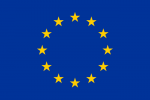Since its launch in September 2023, the AURORA app has attracted over 700 users across five demo-sites and other countries in Europe. We’ve now had a chance to analyze the data collected in the first six months to understand how citizens are using energy in different areas.
Near-zero Citizens are Already Here!
Many AURORA app users have achieved A and A+ labels for electricity, heating, and transportation. This is impressive, although it’s worth noting that our user base might be more eco-conscious than the general population since some were introduced to the app during climate awareness events. Still, it’s clear that reaching near-zero emissions is possible for all demo-sites. However, it may be more challenging for some, like students who have limited financial means.

Why Easy Access to Consumption Data Matters
Electricity consumption reported through the app is quite consistent and matches national averages, likely because most users can easily access their monthly electricity bills. In contrast, tracking heating and transport consumption is more difficult. For example, in Aarhus, district heating means residents don’t always know how their heating is produced, or renters usually see their heating consumption when the bills are provided by the landlord as a lump sum on a yearly basis, making it difficult to track their heating consumption on a monthly basis.
Solar Power Makes a Big Difference
Thanks to the many users who reported using electricity generated from their solar panels, we can confirm that even in countries with greener grids like Denmark and Slovenia, users consuming solar energy have much lower CO2 emissions in this sector compared to those relying on the grid.

Transportation: High Consumption, High Diversity
Transportation is the biggest contributor to energy consumption and carbon emissions for all demo-sites. This sector also shows the widest range of values for users, which is not surprising as most citizens would generally have similar electricity and heat consumption while transportation could vary greatly for different groups such as students, remote workers, full-time workers, and retirees. We have also concluded from our initial analysis that this sector is harder for users to fill out, so more outliers are observed. Users report many different transportation types such as bikes, electric bikes, metro, electric trains, electric cars, electric scooters, and electric, hybrid, and diesel buses, but many users still report fuel cars as their main mode of transportation.
Public Transport is (Obviously) Great
We can clearly see the effect of using public transport on reducing emissions. In Spain, for example, hybrid buses, metro, and light rail are the main modes of transport for over half the users but only account for 7.3% of carbon emissions.

The More Users, the Better!
As more people use the app, we get a clearer picture of diverse energy consumption patterns across different regions. This will eventually help us come up with solutions that citizens can use in their daily lives to reduce their energy consumption and lower their carbon emissions. Want to see what label you’d get and help us out? Try the AURORA app today!
Want to know more?
Interested in our analysis methods or want to do your own? Check out our detailed report, ‘State of the art of energy mix, citizens’ behaviours and environmental impacts of 5 European Communities‘ which is available online. You can also download the latest anonymized dataset of the AURORA app from the AURORA dashboard and use our open-access Jupyter notebooks (available on GitHub) as a starting point for your analysis.



